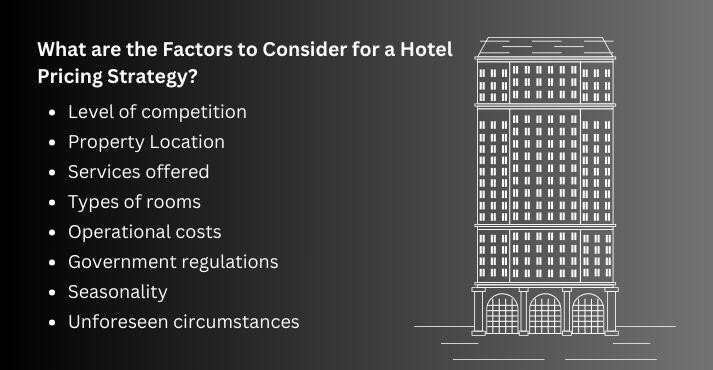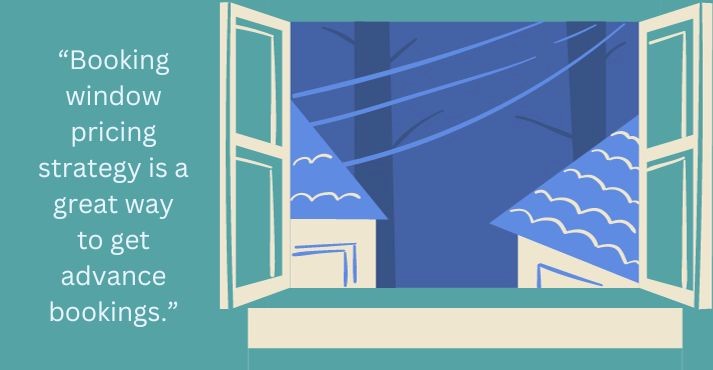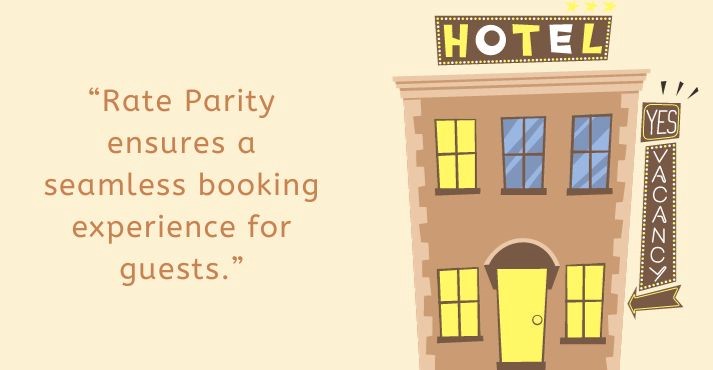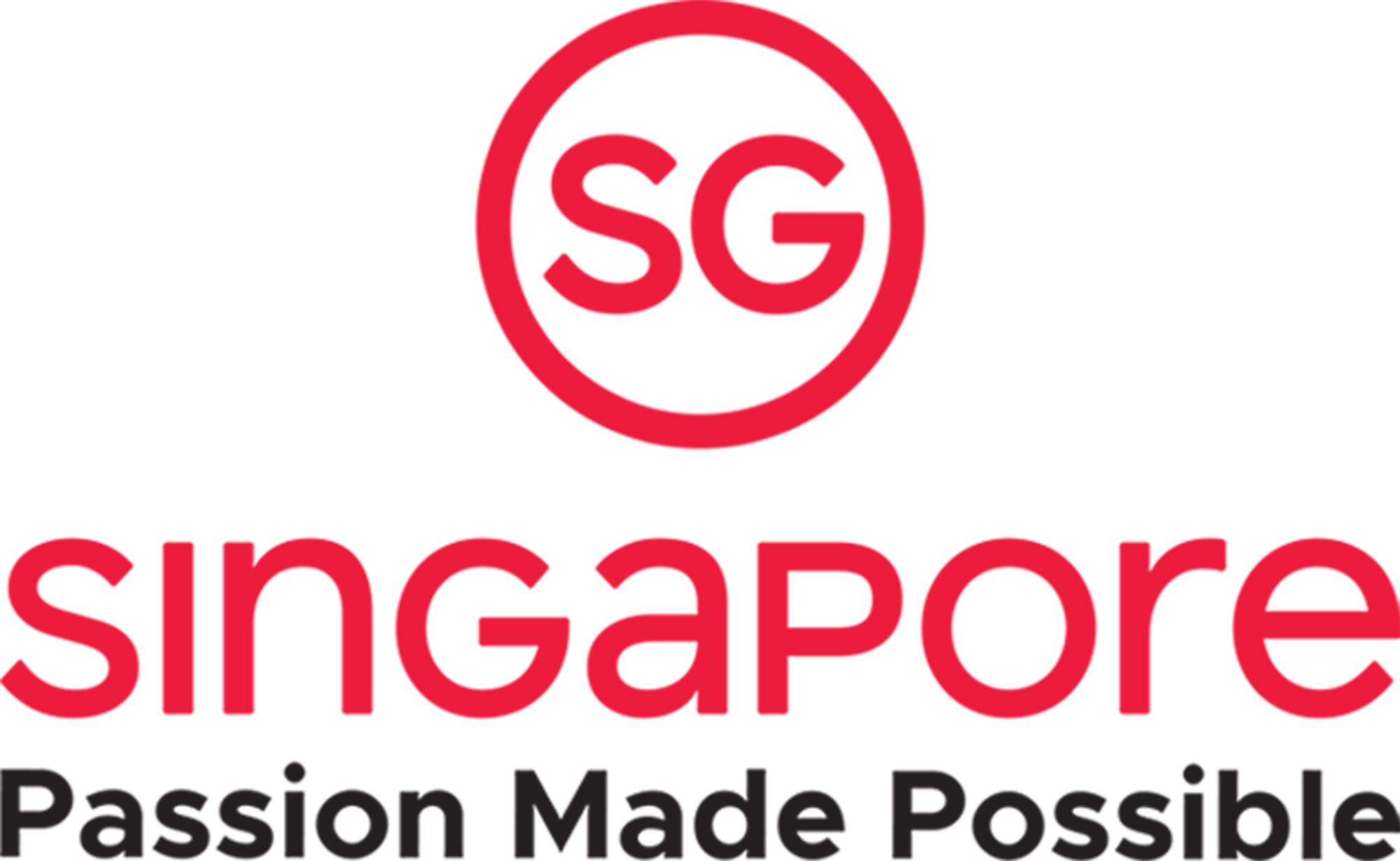Prices are a foundational element of a hotel’s revenues. Pricing aims to increase occupancy rates and boost revenue by attracting guests while maintaining profitability.
There’s always a fine line between prices that are too high and too low. But there is no single best pricing strategy; your goals can help you decide.
Prices are more than just numbers. Considering demand, seasonality, and promotions, hoteliers must combine the best pricing strategies to maximize your hotel’s revenue.
The 17 hotel pricing strategies that we are going to explain in this article are mentioned below:
- Booking Window Based
- Competition-Drive
- Forecast Based
- Segment Based
- Demand Based
- Occupancy Based
- Penetration Pricing
- Guest Based
- Loyalty Based
- Incentive Based
- Length of Stay Based
- Day of Week Based
- Cancellation Policy Based
- Rate Parity
- Package Based
- Upselling
- Cross-selling
What is Hotel Pricing?
Hotel pricing refers to determining the cost of accommodation services a hotel provides. It involves setting prices for various room types, packages, and additional services the hotel offers.
The hotel’s pricing strategy aims to maximize sales and profits, outperform competitors, and best serve your customers.
Pricing strategies in the hotel industry are affected by market conditions, customer behavior, and the hotel’s operational costs.
With a well-thought-out pricing strategy, hotels can ensure they are charging the right amount for their products or services while staying competitive.
How Does Hotel Pricing Work?
Hotel pricing is dynamic and multifaceted, balancing market conditions and customer expectations.
Hotel forecasting allows hoteliers to determine the best prices for their establishments annually. The basic principle of supply and demand determines pricing for hotels. During peak seasons or events, when demand is high, prices tend to rise, and prices reduce during the off-season.
Who is the Head of Hotel Management?
The head of hotel management refers to the title “hotel manager” or “hotelier,” often regarded as the hotel’s General Manager or Director of Operations, who oversees all aspects of a hotel’s day-to-day operations.
The responsibilities of the head of the hotel depend on the hotel’s size, purpose, and expectations from ownership.
They collaborate with revenue managers to set room rates based on market demand, competition, and seasonal trends.
The head of hotel management ensures that pricing aligns with the overall business strategy, balancing occupancy goals with revenue optimization. Their decisions impact the hotel’s competitiveness, profitability, and customer satisfaction.
Factors to Consider When Implementing a Hotel Pricing Strategy

Pricing is integral to hospitality marketing. You must utilize market research and data analysis to make informed pricing decisions.
The factors you should consider when implementing a hotel pricing strategy must be based on the target markets and guest segments and the value of the services offered at the establishment. For example, the largest hotel chain in the world would not compete with a budget hotel.
When devising pricing strategies in the hospitality industry, you need to consider the following aspects:
- Level of competition
Analyze market demand and supply dynamics to set competitive prices that attract guests while maximizing revenue.
- Property Location
Consider location’s impact on demand, adjusting prices based on local attractions, events, and overall market trends.
- Services offered
Price differentiation is based on the quality and variety of services, ensuring value for money and meeting customer expectations.
- Types of rooms
Distinguish pricing based on room categories, amenities, and views, aligning with customer preferences and willingness to pay for upgraded experiences.
- Operational costs
Factor in expenses like maintenance, staff wages, and utilities to determine sustainable pricing that covers operational expenditures while ensuring profitability.
- Government regulations
Adhere to legal requirements and tax regulations, ensuring compliance and avoiding penalties that could impact pricing structures.
- Unforeseen circumstances
Prepare for unexpected events like economic downturns or global crises, adjusting pricing strategies to maintain competitiveness and adapt to changing market conditions.
17 Hotel pricing strategies to increase revenue and profit
Whether a budget hotel or a high-end luxury resort, you must look for pricing strategies that best suit your target market.
So, to set yourself apart from competitors and entice your customers, you must offer well-thought-out prices. Let’s explore the pricing strategies in the hotel industry from which you can choose.
1. Booking Window Pricing

A booking window is a pricing strategy that discusses how much a guest makes a reservation in advance. It is a great way to lock in base far in advance at discounted rates but on non-refundable reservations to lock in the occupancy truly.
For example, if the peak season of the year for your establishment starts in July, and the booking window for that period is 2 months, guests staying during July will book in advance in around May.
Using this strategy, hoteliers can increase the price for high-demand periods when guests are likely to book their stay.
2. Competitive Pricing
Keep an eye on your competitors’ prices. Always know their room rates. An increase in their prices could mean that you need to adjust your rates accordingly.
A competitive pricing strategy refers to understanding the rates your competitors sell their rooms at and setting prices for each room category. Then, compare your rates with their rates to understand what customers are already paying and how much they are willing to pay.
Here are vital pointers when using a competitive pricing strategy:
- Identify and analyze your main competitors in the local area or within your hotel’s market segment.
- Conduct regular and thorough competitor analysis to stay updated.
- Differentiate between room types and match pricing accordingly.
- Monitor your competitors’ promotional activities and discount strategies.
With the advancement of hotel revenue management systems, you can use advanced analytics to set prices based on competitor’s rates. Pricing algorithms enable you to monitor competitive pricing and the room rates of comparable hotels in real-time.
3. Forecast-Based Pricing
Forecast-based pricing refers to collecting and analyzing the correct data to predict how many bookings you will likely have at any given time.
This approach allows you to set rates that align with anticipated demand fluctuations, ensuring competitive pricing during peak periods and enticing discounts during slower times.
Follow these steps to develop a forecast-based pricing strategy:
- Use historical data and analytics
- Monitor your competitors
- Consider special events and holidays
- Follow market trends
- Strategically plan for peak seasons
- Leverage discounts and last-minute offers
Following these steps, you can create a pricing strategy that increases profits and improves guest experience and loyalty.
4. Segment-Based Pricing
Sell the fitting room to the correct type of guest at the right price.
Segment-based pricing in the hotel industry refers to charging different prices to different people for the same room. When you look at your various segments, like corporate or leisure travelers, you see that they each have different stay patterns and willingness to pay.
For example, a luxury hotel may identify two key segments: business travelers and leisure guests. The hotel offers lower rates for business travelers as they are more likely to book more rooms.
For leisure guests with limited stay, hoteliers can charge higher rates due to the duration and urgency of booking.
By tailoring their offerings to these segments, the hotel enhances the overall guest experience and maximizes satisfaction within each group.
5. Demand-Based Pricing
Demand-based pricing refers to the approach in which hoteliers set rates determined by the peaks and valleys of compression in your market.
Also, suppose you’re intrigued by forecast-based pricing but new to the hotel industry and don’t have historical data to build a sound forecast. In that case, a demand-based pricing strategy can be the best approach.
During high-demand periods, prices increase, maximizing revenue for the hotel. It is essential to thoroughly research events that drive demand in your market, such as concerts, conventions, sports games, and holidays.
Hotel managers should also consider external factors such as competition, economic trends, and environmental factors when determining prices. Meanwhile, customers enjoy lower room rates during the off-season, incentivizing bookings.
6. Occupancy-Based Pricing

Occupancy-based pricing refers to the dynamic approach in which prices of hotel rooms depend on the number of extra guests (adults/children) allowed in a room. You must increase your room rates when demand exceeds supply.
First, the occupancy-based rate can be on a per-guest basis or a unit’s maximum or intended occupancy. This type of pricing can make your hotel more flexible and create more revenue potential for every room.
Benefits of occupancy-based pricing include:
- Capitalize on high-demand periods, maximizing revenue during peak times
- Attractive rates during low-demand periods attract cost-conscious customers
- Adapt to market conditions, seasonal variations, and events, optimizing prices
Hoteliers and managers can optimize room rates manually or automatically using an integrated hotel management system. You can achieve financial goals by closely monitoring occupancy rates and adjusting pricing accordingly.
7. Penetration Pricing
Penetration pricing is a strategy in which you start with lower rates than your competitors far in advance. This way, you fill up rooms faster than your competitors do.
As the check-in date approaches, rates are increased, capitalizing on the early head start in occupancy compared to other hotels in the market.
Suppose you’re starting your hotel business or striving to generate more revenue. In that case, you can adopt penetration pricing by offering discounted rates for its rooms during the first few months of operation. This approach entices cost-conscious travelers and accelerates the hotel’s occupancy rates, creating a perception of popularity.
8. Guest-Based Pricing
Guest-based pricing is where you charge higher prices to different types of guests, similar to segment-based pricing.
The primary goal of guest-based pricing is to attract guests who are likely to spend significantly on rooms and other services at the establishment. It might include guests who value luxury, exclusivity, or an experience such as a sea-facing balcony room.
Guest-based pricing enables hotels to provide a more personalized experience. By understanding the demands of guests, you can deliver rooms and facilities per their specific needs, preferences, and budget.
9. Loyalty-Based Pricing
Loyalty-based pricing refers to exclusive discounts, perks, or privileges for guests who consistently choose a particular hotel brand.
Here’s how loyalty-based pricing attracts more guests and drives revenue:
- Discounts or perks reward frequent customers, encouraging them to return for future transactions.
- Strengthens the bond, reducing the likelihood of customers switching to competitors.
- Rewards create emotional connections, making customers more committed to choosing a specific brand.
- Loyal customers spend more over time, contributing to higher overall revenue.
- Satisfied guests share their experiences, attracting new business through positive recommendations and reviews.
- Loyalty-based pricing actively involves customers, keeping them engaged and invested in the brand’s products or services.
By implementing loyalty-based prices, hotels incentivize repeat business, nurturing customer retention. Returning guests receive benefits such as room upgrades, complimentary services, or points redeemable for future stays.
10. Incentive-Based Pricing
Incentive-based pricing refers to structuring rates to motivate specific guest behaviors. Hotels may offer discounts for early bookings, extended stays, or off-peak periods to stimulate demand during slower times. Special packages bundling accommodations with amenities or experiences further entice guests.
For example, a hotel introduces an early bird promotion where guests receive a 20% discount on room rates if they book at least a month in advance. This incentive encourages guests to plan their trips, giving the hotel a clearer occupancy and revenue forecast.
11. Length of Stay-Based Pricing
Length of stay-based pricing refers to providing discounts or incentives for longer stays. Hotels motivate guests to extend their visit, resulting in increased room revenue.
This pricing strategy minimizes the likelihood of vacant rooms during off-peak periods, optimizing occupancy rates. Guests benefit from cost savings, while hotels secure a steady revenue stream over an extended period.
For example, a top-class resort offers a tiered discount system to introduce length-of-stay-based pricing. Guests who book at least five nights receive a 15% discount, while those staying seven or more enjoy a 25% discount.
It will encourage the guests to extend their vacations, benefit from substantial cost savings, and help the resort maximize its room revenue.
12. Day of Week Based Pricing
Day-of-week-based pricing refers to the strategic approach that maximizes revenue and optimizes occupancy by adjusting room rates based on demand patterns throughout the week.
This dynamic pricing model allows hotels to offer lower rates on less busy days, attracting cost-conscious travelers and higher rates during peak periods when demand is high.
As a result, hotels can achieve a balanced occupancy rate throughout the week, ensuring that rooms are consistently filled while maximizing revenue during high-demand periods.
Consider these tips when crafting a weel-based pricing strategy for your hotel:
- Understand demand patterns
- Identify buying behaviors on specific days
- Differentiate your offerings to provide added value on specific days
- Use limited-time offers to create a sense of urgency
- Integrate day-of-week incentives into loyalty programs
- Educate customers on the value they receive on specific days
13. Cancellation Policy Pricing
Cancellation policy pricing refers to the strategy that offers a discount on non-refundable rates, offering flexible options with slightly higher rates or stricter policies with lower rates.
This strategy incentivizes guests to choose non-refundable options, reducing the likelihood of cancellations. The revenue from non-refundable bookings contributes to a more stable income stream.
Therefore, if the guest cancels or doesn’t show up, you’ll retain the amount already paid and gain another room you can resell, usually at a lower rate. It will work better during the season when you can easily resell rooms.
14. Rate Parity

Rate parity refers to the pricing strategy that ensures the hotel offers the same rates on all booking platforms, including its official website.
Rate Parity ensures a seamless booking experience for guests, promoting trust and loyalty. By eliminating price variations, hotels can attract a diverse guest segment, maintain a competitive edge, and prevent potential guests from seeking lower rates on other platforms.
Rate parity can be categorized into two segments:
- Wide Rate Parity: Ensures consistent pricing across various distribution channels, including online and offline platforms, maintaining uniformity to prevent customer confusion and dissatisfaction.
- Narrow Rate Parity: Focuses on maintaining consistent rates across specific channels, allowing more flexibility for targeted promotions and strategic pricing adjustments on other platforms.
Ensuring rate parity across multiple channels boosts brand integrity and optimizes revenue and credibility among guests.
15. Package-Based Pricing
Package-based pricing is where hoteliers bundle accommodations with additional services or amenities at a fixed rate. These packages may include meals, spa treatments, tours, or other experiences.
This strategy not only simplifies the booking process for guests but also provides them with added value and convenience. For hotels, Package-Based Pricing promotes upselling and revenue diversification.
For example, some of the most popular package-based pricing include:
- Family packages
Geared towards families, these packages may include perks such as discounted rates for additional rooms, family-friendly activities, or complimentary meals for children.
- Dining packages
Include meals or dining credits as part of the accommodation package, encouraging guests to dine at the hotel’s restaurants.
- Spa packages
Combine room reservations with spa services, such as massages or wellness treatments, providing a holistic relaxation experience.
- Adventure or tour packages
Integrate accommodations with guided tours, local excursions, or outdoor activities to appeal to adventurous travelers.
- Romantic packages
tailored for couples often include champagne, flowers, and romantic dinners to enhance the romantic getaway experience.
16. Upselling
Hotel upselling refers to selling guests more services and generating extra revenue through upgrades, extras, or add-ons. For instance, a hotel might offer a room upgrade to a suite at a higher rate, providing more space and luxurious amenities.
Benefits of doing upselling include:
- Higher profitability
- Increased revenue
- Greater utilization of hotel facilities
- Better guest experience
- More hotel occupancy
Effective upselling relies on understanding guest preferences and needs, providing attractive offerings, and creating a positive perception of added value. Upselling at your hotel allows you to make more revenue from each reservation you receive.
17. Cross-selling
Cross-selling in hotels is a pricing strategy where the hotel promotes additional services, products, or experiences to guests when booking or during their stay.
Cross-selling involves offering services compatible with something guests have already paid for. An example could be a spa receptionist who suggests a facial in addition to the guest’s massage. Or a waiter recommending a bottle of wine to go with their steak.
Here are some tips for effective cross-selling:
- Understand your guests’ needs and preferences
- Bundle complementary products or services together
- Place signage or marketing materials at critical touchpoints
- Effective cross-selling requires well-trained front-desk agents
- Conduct feedback and surveys to get insights on guest behavior and purchase pattern
Cross-selling enhances the overall guest experience, increases customer satisfaction, and boosts revenue by encouraging guests to purchase various services beyond their initial room reservation.
Conclusion
As a hotelier, you must know the best pricing strategies for maximizing revenue and staying competitive in the ever-evolving hospitality industry. Hoteliers must test different pricing strategies to understand which combination helps them increase revenue and boost occupancy.
The different pricing methods can be used at the same time and can also be used during different times of the year. See what works best for you and your target audience. Winning the hotel management game is about implementing the right strategies at the right time.
From navigating the complexities of dynamic pricing and guest experiences, hoteliers need to continually analyze market trends, leverage technology, and adapt pricing strategies to meet the diverse needs of their target audience.













